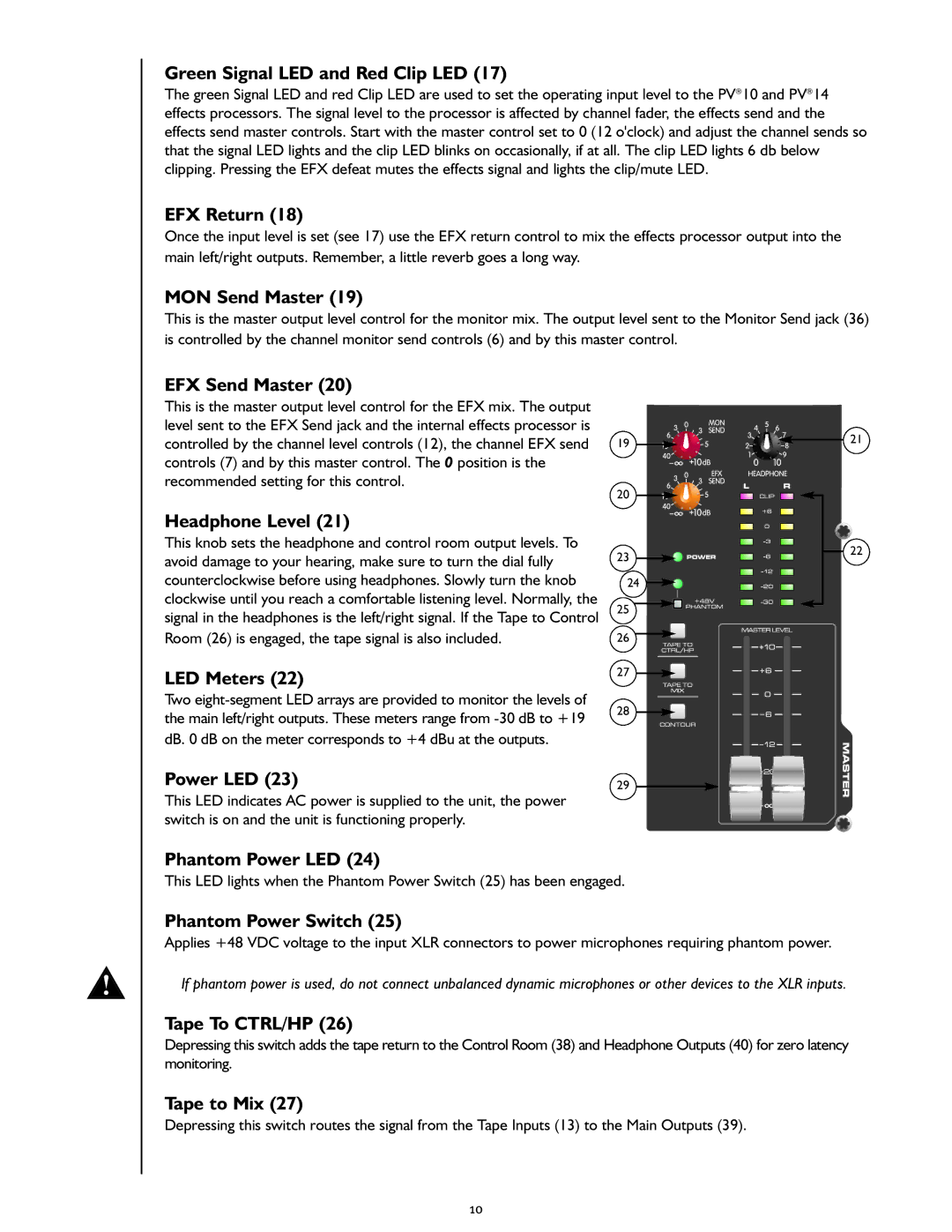PV 10, PV 14 specifications
The Peavey PV 14 and PV 10 mixers are versatile and reliable audio mixing solutions tailored for musicians, sound engineers, and event organizers. Known for their robustness and intuitive design, these mixers are ideal for live sound, studio recordings, and other audio applications.The PV 14 is a 14-channel mixer, offering a combination of XLR and line inputs that make it suitable for a variety of audio sources. It features 8 low-noise microphone preamps, which provide a transparent and clear sound, essential for vocal and instrument capture. Additionally, it includes 4 stereo channels, expanding its capacity for media players and other stereo sources.
On the other hand, the PV 10 offers 10 channels, making it a more compact solution while still retaining essential features. It includes 4 microphone inputs, 2 stereo line inputs, and offers flexibility for smaller setups or personal use.
Both mixers boast a range of powerful features, such as 3-band EQ and auxiliary sends, allowing users to customize their sound and manage effects for each channel. The built-in digital effects processor enhances the output, featuring multiple reverb, delay, and modulation effects that can be easily adjusted.
One of the key technologies found in the PV series is the patented Peavey MID-MAX EQ. This unique equalization system allows for precise frequency adjustments, making it easier to tackle challenging audio environments. The mixers also include high-quality headphone outputs and speaker outputs, enhancing their utility for monitoring and performance.
The construction of both the PV 14 and PV 10 is robust, designed for the rigors of live performances. With a durable chassis and high-quality components, they can withstand the demanding conditions of touring and regular use.
Portability is another hallmark of these mixers. Lightweight yet strong, they are easy to transport, making them a preferred choice for mobile DJs, solo performers, and bands alike.
In conclusion, the Peavey PV 14 and PV 10 mixers stand out due to their functional design, extensive features, and high-quality audio performance. Whether for large events or intimate gatherings, they provide reliable solutions for all audio mixing needs.

